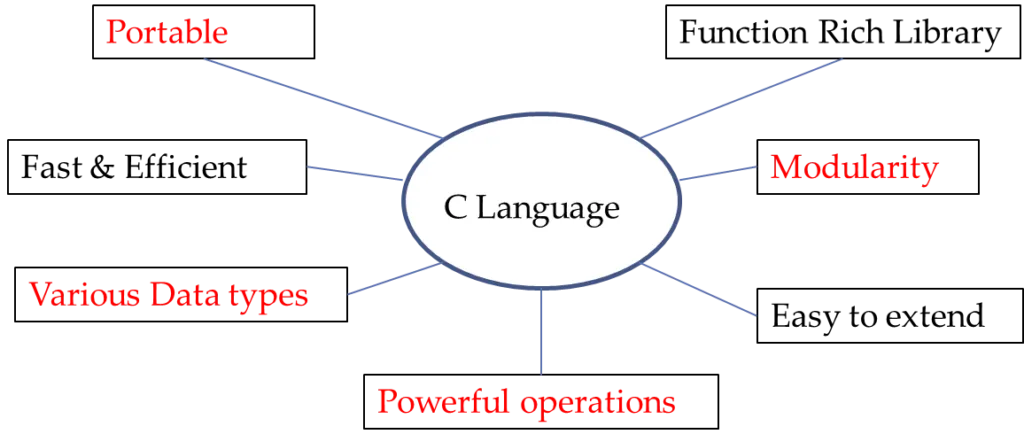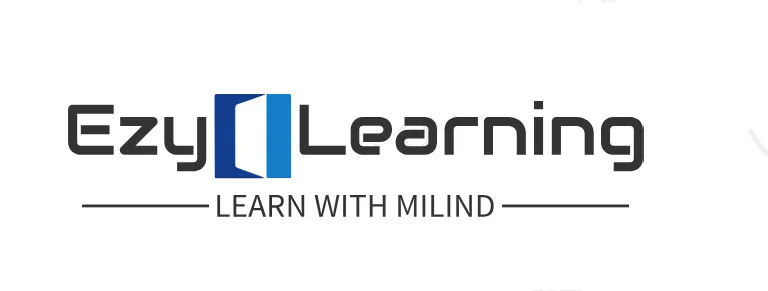1. Introduction to C Programming Language
Let us first find an answer to a basic question which comes in mind of every learner. i.e why to learn programming?
Learning programming is one of the most rewarding and fun things you can do. Programming is not just about writing code, but also about solving problems, creating new things, and expressing yourself. Programming can help you in many aspects of your life, such as:
- Career: Programming skills are in high demand in many industries and sectors. You can find a job as a software developer, web designer, data analyst, game developer, and more. You can also create your own apps, websites, or games and earn money from them.
- Education: Programming can help you learn math, logic, science, and other subjects. You can use programming to create interactive simulations, visualizations, or experiments. You can also use programming to automate tasks, analyze data, or do research.
- Creativity: Programming can unleash your creativity and imagination. You can use programming to make art, music, animations, or stories. You can also use programming to invent new things, explore new possibilities, or experiment with different ideas.
- Fun: Programming can be a lot of fun and enjoyment. You can use programming to play games, make jokes, or prank your friends. You can also use programming to join online communities, participate in competitions, or collaborate with others.
As you can see, learning programming has many benefits and advantages. Programming is not hard to learn if you have the right attitude and motivation. You just need to be curious, persistent, and willing to learn from your mistakes. Programming is a skill that anyone can learn and enjoy.
So what are you waiting for? Have a short introduction to C programming and Start learning programming today and discover a whole new world of possibilities!
A Brief Background
- The concept of structured programming was first introduced in ALGOL (Algorithmic Language).
- ALGOL is the first language to use block structure.
- All modern languages including C are derived from ALGOL.
- ALGOL was first developed in early 1960s.
- ALGOL not become popular in USA but widely used in EUROPE. It became a foundation for C language-
Foundation of C
- In 1970 Ken Thompson developed a language ‘B’
- ‘B’ was used to develop the first version of UNIX operating system.
- Based on ALGOL and ‘B’, in 1978, Brian Kernighan and Dennis Ritchie produced the first publicly available description of C, now known as the K&R standard.
- Till today C is the core language to develop the UNIX and they both are strongly connected.
- Finally, C can be describe as-
C is a general-purpose, high-level language that was originally developed by Dennis M. Ritchie to develop the UNIX operating system at Bell Labs. C was originally first implemented on the DEC PDP-11 computer in 1972.
What is C Language?
C is a general-purpose, procedural, high-level programming language that was developed by Dennis M. Ritchie at the Bell Telephone Laboratories in 1972. C is widely used to develop software like operating systems, databases, compilers, and applications. C is also known for its speed, portability, and low-level access to hardware.
Applications of C Programming
C programming language is a widely used language that has many applications in various domains. Here are some of the recent applications of C programming that demonstrate its versatility and power in the real world.
- GUI (Graphical User Interface): C is also used to create graphical user interfaces for desktop applications, such as Microsoft Office, Adobe Photoshop, Google Chrome, etc. C can interact with libraries like- GTK+, Qt, Win32 API, etc., which provide widgets and tools for creating GUIs.
- Embedded systems: C is a popular choice for developing embedded systems, such as microcontrollers, sensors, IoT devices, etc. C can run on limited resources and provide direct control over hardware components. C is also used to program firmware and device drivers for embedded systems.
- Compiler design: C is often used to implement compilers for other languages, such as C++, Java, Python, etc. C can generate efficient and portable code that can run on different platforms. C also supports lexical analysis, parsing, code generation, and optimization techniques for compiler design.
- Gaming and animation: C is also used to create games and animations that require high performance and graphics. C can work with libraries like OpenGL, DirectX, SDL, etc., which provide functions for rendering 2D and 3D graphics.
- Handle Complex Algorithms: C can also handle complex calculations and algorithms for game logic and physics.
History of C
| Year | Event |
|---|---|
| 1972 | Dennis Ritchie at Bell Labs began developing C. |
| 1973 | The first version of C was released. |
| 1978 | The first edition of “The C Programming Language” was published by Brian Kernighan and Dennis Ritchie |
| 1983 | The American National Standards Institute (ANSI) established a committee to standardize C, resulting in the ANSI C standard in 1989. |
| 1989 | The ANSI C standard was published. |
| 1990 | The C89 standard was ratified by the International Organization for Standardization (ISO) |
| 1999 | The C99 standard was published, adding new features to the language. |
| 2011 | The C11 standard was published, introducing further improvements and features. |
| 2018 | The C18 standard was published, updating and refining the language further. |
Reason for popularity of C
C has now become a widely used professional language for various reasons −
- Easy to learn.
- Structured language
- It produces efficient programs.
- It can handle low-level activities.
- It can be compiled on a variety of computer platforms.
- C compilation and execution time is almost similar to execution time of assembly lang.
Features of C

- C is a high-level language.
- Small in size, it has only 32 keywords to do all.
- C is functional programming, i.e. Makes extensive use of function call.
- Has very fast execution time; similar to assembly programming.
- C is portable, i.e. program once written can be run on other machine with little or no modifications.
- C is extensible, user can add his/her own program to C library.
- Functional and structural approach makes C easy to debug and understand.
- Supports low level (bit wise) programming. Supports rich set of built in library functions.
- Portability: Programs can run across different machines.
- Efficiency: Fast execution with low-level memory access.
- Structured Programming: Supports modular design using functions.
- Rich Library: Provides built-in functions for I/O, math, and string handling.
- Flexibility: Allows both high-level and low-level programming.
Compilation and Execution Process
- Source Code (.c): Written by programmer.
- Compiler: Converts source code into object code.
- Linker: Combines object code with libraries.
- Executable (.exe/.out): Final program ready to run.
Advantages of Learning C
- Builds strong programming fundamentals.
- Helps understand memory management and pointers.
- Forms the basis for learning advanced languages.
- Widely used in academia and industry.
Challenges in Learning C
- Manual memory management.
- Steeper learning curve compared to beginner-friendly languages.
- Error-prone syntax (e.g., missing semicolons).
Sample Questions
- Who developed the C language and when?
- List three key features of C.
- Write the basic structure of a C program.
- Explain the compilation process in C.
- Why is C considered the mother of programming languages?
Suggested Exercises
- Write a program to print your name.
- Modify the Hello World program to print multiple lines.
- Explore different header files and their functions.
Summary
Learning programming is rewarding and fun, offering career opportunities in software development, web design, and more. It also aids education, creativity, and entertainment. C programming, developed in 1972, is a high-level language known for its speed, portability, and low-level hardware access. Its applications include GUI creation, embedded systems, compiler design, gaming, and handling complex algorithms. The language has evolved through various standards, from the initial release in 1973 to the latest C18 standard in 2018.
